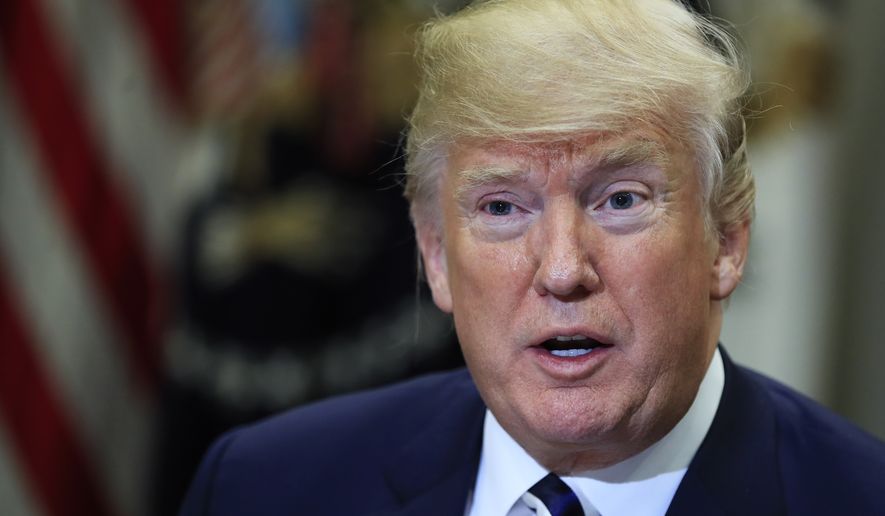President Trump will crack down on what he calls China’s unfair trade practices and theft of U.S. intellectual property with a package of punitive actions Thursday that include up to $60 billion in tariffs on imports.
The tariffs, which chiefly target information technology, consumer electronics and telecoms, follow through on Mr. Trump’s tough talk against China’s trade abuses that helped fuel his White House win.
The measures enjoyed strong support from Mr. Trump’s economic team, especially U.S. Trade Representative Robert Lighthizer. Beyond the White House, however, business leaders and free-trade advocates argue that U.S. consumers are the ones who ultimately pay the new tax.
The tariffs are being imposed under Section 301 of the Trade Act of 1974 that authorizes the president to take action or retaliation against unjustified, unreasonable or discriminatory foreign trade laws that hurt U.S. commerce.
The list of items subject to the tariff could also be expanded to include clothing and shoes, according to Reuters, which first reported the tariff plan last week.
The administration has warned Beijing to further open markets and loosen rules that disadvantage U.S. companies, and the tariffs hammer home the demand.
The implementation of the tariffs will be delayed, allowing for negotiations with China over trade practices and intellectually property rights.
The White House declined to comment Wednesday on the tariff rollout.
Joshua Bolten, president of the Business Roundtable, said that unilaterally imposing tariffs “will only stifle job creation, reduce the competitiveness of businesses, and increase prices for American families.”
A group of retail giants including Walmart, Target and Costco in a letter urged Mr. Trump to reconsider.
“This is not American industries crying wolf,” said Sandy Kennedy, president of Retail Industries Leaders Association. “Higher tariffs will mean higher costs to businesses and in turn higher prices for American families. After a major tax reform victory, widespread tariffs on everyday consumer goods will wipe out much of the benefits realized by the average American household.”
Critics also warned that Mr. Trump was setting off a trade war with America’s biggest trading partner, as well as possibly souring relations with a key ally in Mr. Trump’s upcoming nuclear talks with North Korea leader Kim Jong-un.
Mr. Trump has brushed off talk of trade wars in a tweet earlier this month: “When a country (USA) is losing many billions of dollars on trade with virtually every country it does business with, trade wars are good, and easy to win. Example, when we are down $100 billion with a certain country and they get cute, don’t trade anymore-we win big. It’s easy!”
That was after the Trump administration announced tariffs on steel and aluminum. Those tariffs take effect Friday and hit all imports of steel and aluminum.
Mr. Trump called out China for dumping cheap steel in the U.S. when announcing the tariffs, although China accounts for a small portion of U.S. steel imports.
In January, Mr. Trump slapped tariffs on imports of solar panels and washing machines. Beijing voiced “strong dissatisfaction.”
A week later, China’s biggest maker of solar panels announced plans to open a new U.S. factory.
The new tariffs on technology and intellectual property are expected to be worth between $30 billion and $60 billion, roughly the value of U.S. technology lost to China due to the country’s onerous trade rules.
“I don’t think there is any silver bullet solution to this, but we know what doesn’t work and that is tariffs,” said Christine McDaniel, an economist at George Mason University’s Mercatus Center.
She said multilateral trade deals, such as the Trans Pacific Partnership that Mr. Trump tore up, are more effective in putting pressure on China.
“It he can keep using these tariffs as negotiation tools, more power to him. But we need to rewrite trade rules and do it with countries that are eager to do it with us,” said Ms. McDaniel. “They can live without the U.S. but they can’t live without the rest of the world.”
• S.A. Miller can be reached at smiller@washingtontimes.com.




Please read our comment policy before commenting.